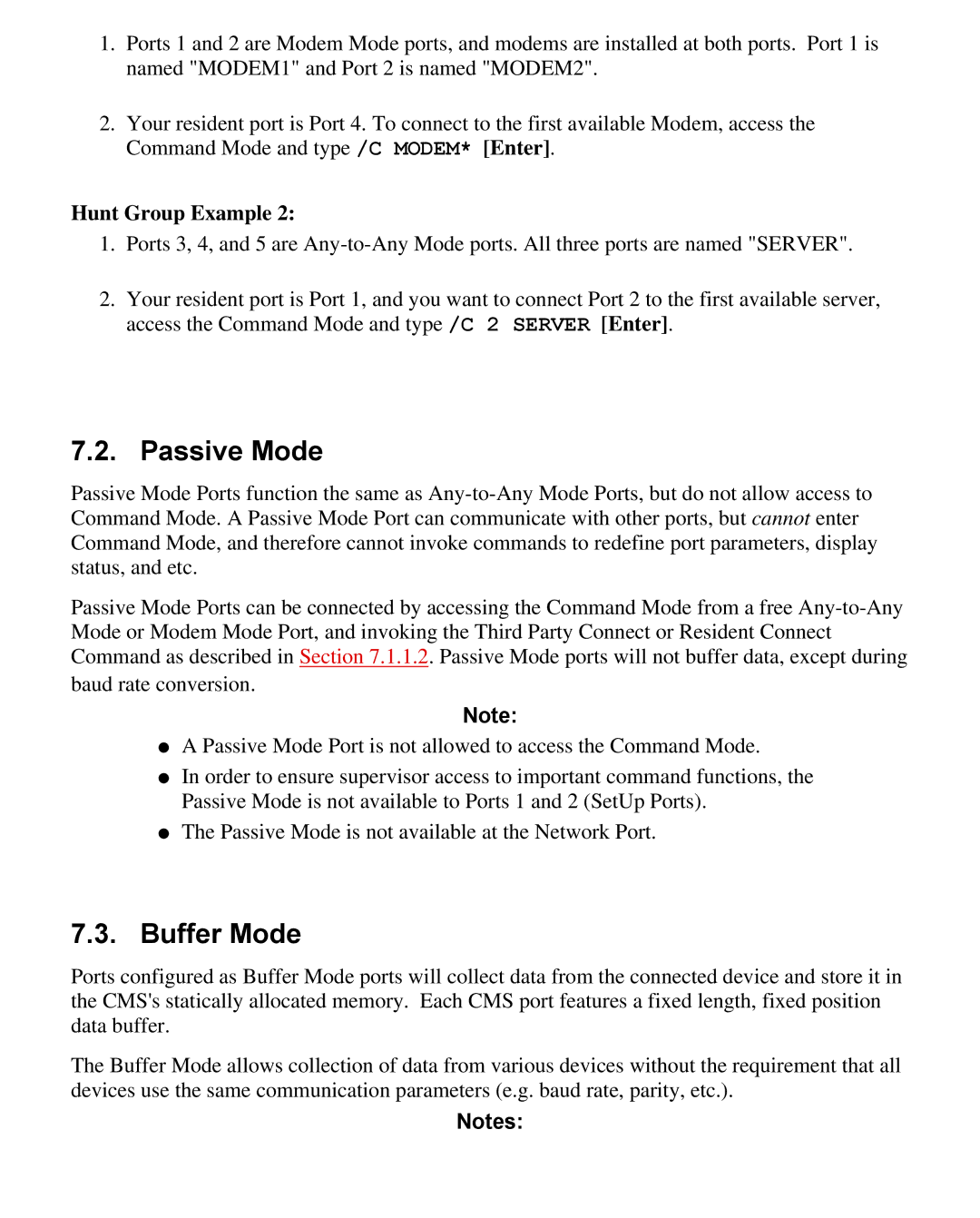1.Ports 1 and 2 are Modem Mode ports, and modems are installed at both ports. Port 1 is named "MODEM1" and Port 2 is named "MODEM2".
2.Your resident port is Port 4. To connect to the first available Modem, access the Command Mode and type /C MODEM* [Enter].
Hunt Group Example 2:
1.Ports 3, 4, and 5 are
2.Your resident port is Port 1, and you want to connect Port 2 to the first available server, access the Command Mode and type /C 2 SERVER [Enter].
7.2. Passive Mode
Passive Mode Ports function the same as
Passive Mode Ports can be connected by accessing the Command Mode from a free
Note:
●A Passive Mode Port is not allowed to access the Command Mode.
●In order to ensure supervisor access to important command functions, the Passive Mode is not available to Ports 1 and 2 (SetUp Ports).
●The Passive Mode is not available at the Network Port.
7.3.Buffer Mode
Ports configured as Buffer Mode ports will collect data from the connected device and store it in the CMS's statically allocated memory. Each CMS port features a fixed length, fixed position data buffer.
The Buffer Mode allows collection of data from various devices without the requirement that all devices use the same communication parameters (e.g. baud rate, parity, etc.).
Notes:
